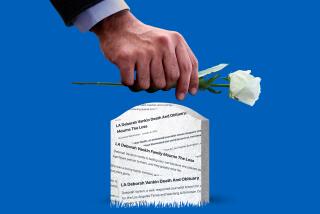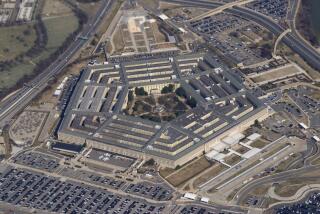Hoaxes, Rumors and Wishful Thinking Spawned by Trauma
- Share via
NEW YORK — The picture is chilling. A tourist poses for a portrait on the World Trade Center’s observation deck--oblivious to the airplane approaching just behind him. The camera, the story goes, was found in the rubble by a rescue worker, who developed the film.
But take a closer look. Why is the tourist wearing a stocking cap and heavy coat when the weather on Sept. 11 was beautiful? Didn’t he hear the plane? And how did the camera and film survive the explosion, fire and 110-story fall?
Suddenly, the picture and the horrible story it suggests begin to unravel. The north tower, which was the first hit, doesn’t have an outdoor observation deck. The south tower’s decks didn’t open until 9:30 a.m. And the plane crashed into the north tower at 8:45. The light on the plane comes from a different angle than the rest of the shot, and the fast-moving aircraft, photo experts say, should be blurry.
The picture, making the rounds on the Internet, is one of many hoaxes, rumors and incidents of wishful thinking that reflect the hopes and horrors of the attacks.
Some of them are outright fabrications:
* Nostradamus predicted the tragedy. (The French astrologer never wrote the 1654 quotation cited in e-mails whipping around the country. And besides, he died in 1566.)
* CNN showed 10-year-old footage of Palestinians celebrating the attacks. (Reuters TV shot it the day of the attacks, CNN says, and the student who claimed that his friend had the original 10-year-old tape has since recanted.)
* A commuter train full of people was buried in the World Trade Center station. (Not true.)
There’s the wishful thinking:
* Survivors were making phone calls from under the rubble. (Phone company Verizon Wireless did bring a mobile unit to the site to help pinpoint the location of cell phone signals. But Verizon spokesman Jim Gerace said that although it identified some passive signals, there was no evidence of last-ditch calls.)
* A rescue worker rode the rubble down from the 82nd floor and lived. (This one has a grain of truth. Port Authority Sgt. John McLaughlin was handing out air packs to rescue workers going into the building when the tower collapsed. Crews pulled him out of the debris a day later. McLaughlin, whose foot was badly injured, was one of the last people to be found alive.)
“That’s pretty incredible in itself,” said Port Authority spokesman Alan Hicks. “But people wanted a miracle to believe in. If he could survive . . . then maybe their friend or relative could too.”
Therein lies the essence of the legends and stories that accompany every disaster, says Barbara Mikkelson, one of the authors of a Web site devoted to debunking urban legends, https://www.snopes.com.
“The stories that get picked up and carried have something in them that resonates when people hear them,” she said. “The body of legends form a very accurate reflection of society’s fears, concerns and morals of that moment. It happens naturally and without any hands behind the scenes pulling the strings.”
Even the sick jokes--or fake photos--are a part of processing tragedy. “Humor is a way of dealing with unspeakable horror,” Mikkelson said. “It’s a way of invoking mastery over events that cannot be controlled.”
Image in Photo is Real but Unexplainable
But the most haunting stories are the ones that can’t be explained. Just ask photographer Mark Phillips, whose picture of the burning World Trade Center seems to contain a face in the smoke. Some see the face of Satan, complete with horns and beard. Others discern Osama bin Laden, or swear it’s the visage of God.
Phillips has received more than 4,000 e-mails--everything from saying he’s a divine (or evil) messenger to accusing him of doctoring the photo. But Phillips and his news agency, Associated Press, say the picture was taken and transmitted so quickly--within 15 minutes of the attack--that there would be no time to alter the image, and journalistic ethics would never allow it anyway. They have kept the original files and transmission times to counter skeptics.
“I didn’t even notice it when I sent the picture, and AP didn’t notice when they moved it along with the other photos I sent. It wasn’t until later that people started calling in,” Phillips said.
“Smoke billows. It makes shapes with light and shadows. To me, it’s like someone seeing something in the clouds or in a Jackson Pollock painting. They see what they want to see.”
More to Read
Sign up for Essential California
The most important California stories and recommendations in your inbox every morning.
You may occasionally receive promotional content from the Los Angeles Times.













